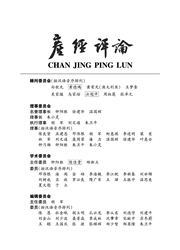

 中文摘要:
中文摘要:
本文研究了买方抗衡势力的存在对上游制造商定价决策的影响,讨论了制造商在不同定价形式(线性定价、两部收费制和转售价格维持(RPM))之间的选择问题,并构建了两阶段动态博弈模型,引入买方抗衡势力,比较分析了制造商在零售商具有和不具有买方抗衡势力两种情况下,制造商最优定价形式的选择。研究发现当零售商不具有买方抗衡势力时,制造商选择两部收费制和RPM是无差异的,都能使上游制造商获得相等的最优利润;当零售商具有买方抗衡势力时,对于上游制造商来说两部收费制优干RPM,RPM又优于线性定价。此外,本文还发现存在一个由抗衡势力和零售商替代程度决定的临界条件,当满足这一条件时,两部收费制是上游的最优选择;一旦这一条件不满足时,RPM就成了上游的最优选择。
 英文摘要:
英文摘要:
This paper studies the impact of countervailing power on pricing decisions of the upstream supplier. More specifically, the choices of the supplier among different pricing--linear pricing, two - part tariff and the resale price maintenance (RPM) --were discussed in two situations where the retailer has countervai- ling and doesn't have countervailing power, respectively. Building a two -stage dynamic game model and introducing the countervailing power into the model, we show that two - part tariff and RPM are equivalent, that is to say both of them can produce the " first best" profits for the supplier, when the retailers don't have coun- tervailing power. However, when a single retailer has countervailing power, two -part tariff is superior to RPM, and RPM is superior to linear pricing, that is to say only two - part tariff can produce the "first best" profit for the supplier. Also, we found that there is a prerequisite consisted by the countervailing power and the degree of substitutability for the use of two - part traffic. When the prerequisite was met, two - part tariff is the optimal choice of the supplier; however, once the prerequisite didn't be met, RPM became the sub - optimal choice of the supplier.
 同期刊论文项目
同期刊论文项目
 同项目期刊论文
同项目期刊论文
 期刊信息
期刊信息
